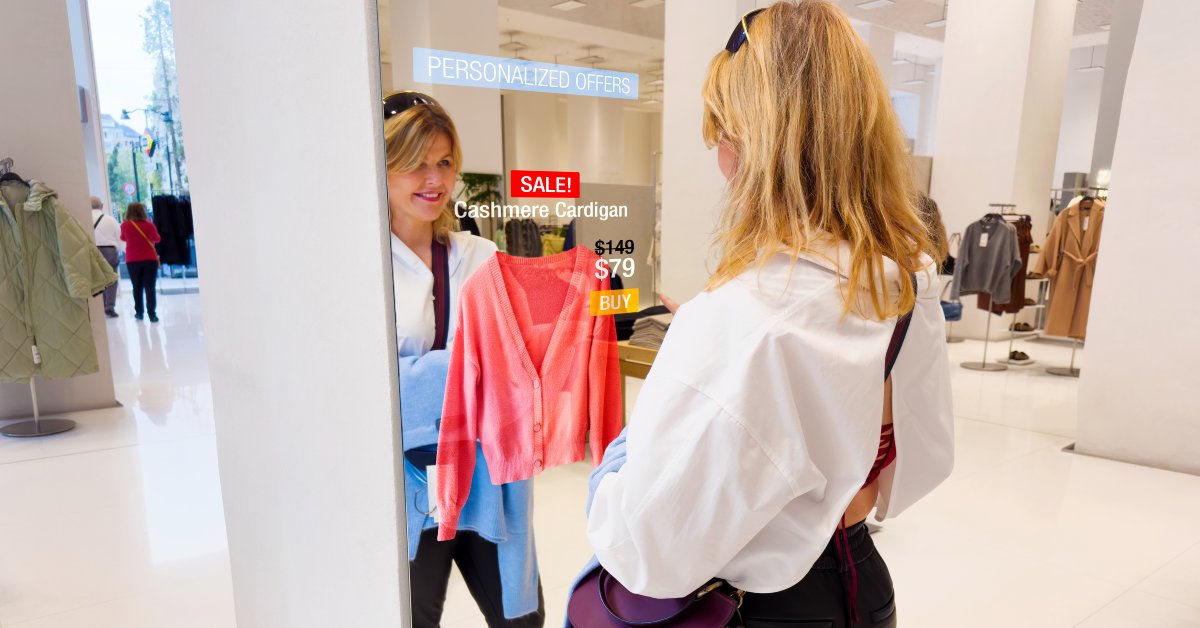Virtual reality (VR) and augmented reality (AR) are rapidly gaining traction in the fashion world, offering exciting possibilities for brands and consumers. With these technologies, fashion enthusiasts can experience clothing in new ways, designers can push creative boundaries, and businesses can streamline operations.
South Boutique is here to explore the fascinating ways the fashion industry is adopting VR and AR technology, unveiling opportunities that were once thought to be futuristic fantasies. Use this guide to learn how you can start interacting with fashion in new, innovative ways.
What Are VR and AR Technologies?
Virtual reality (VR) creates a completely immersive digital environment, isolating users from the real world and allowing them to explore a computer-generated space. VR provides a 360-degree view of a different reality.
Augmented reality (AR), on the other hand, enhances the real world by overlaying digital imagery onto a user’s view. For example, AR makes it possible for you to point your phone at a dress and instantly see how it looks on you. Both technologies offer unique experiences but serve different purposes in the fashion landscape.
The distinction between VR and AR is crucial, as each technology offers unique benefits. VR fully immerses users into new environments where they can interact with digital elements seamlessly. In contrast, AR blends the real and digital worlds, adding layers of information and visuals to the existing environment. This makes AR ideal for enhancing everyday experiences without complete immersion.
Benefits of VR and AR for the Fashion Industry
Adopting VR and AR in fashion is a strategic move that offers numerous benefits. These technologies enhance customer experience, streamline operations, and open new avenues for creativity and innovation. These technologies also support sustainable practices, aligning with the industry’s and consumers’ growing commitments to environmental responsibility.
From a business perspective, VR and AR reduce overhead costs by minimizing returns, optimizing inventory, and cutting down on physical samples. These technologies also help brands stand out in a competitive market by offering unique experiences that attract and retain customers.
How the Fashion Industry Is Adopting VR and AR

Fashion brands are always on the lookout for innovative ways to engage their audience, and AR and VR help to this end. These technologies are enabling brands to create more interactive and personalized consumer experiences. By leveraging VR and AR, fashion companies can stay ahead of the curve and appeal to tech-savvy consumers. Here are some of the ways this technology can change the way we approach fashion.
Virtual Try-Ons
Skip the endless fitting room lines with technology. Virtual try-ons allow customers to see how clothing and accessories will look on them without physically trying them on.
Using AR, shoppers can use their smartphone cameras to superimpose garments onto their bodies. This saves time and enhances the shopping experience by providing a realistic preview of how items will fit and look without the hassle of actually trying them on.
Virtual try-ons lead to fewer returns and more consumers having confidence in online purchases. It’s a win-win situation for both consumers and retailers.
This technology also lets customers experiment with styles they might not have considered before and helps them expand their fashion horizons.
Bringing Technology to Physical Stores
Physical stores are incorporating VR and AR to make shopping more engaging and convenient. AR mirrors allow customers to see themselves wearing different outfits without changing clothes. This technology enhances the in-store experience by providing instant style advice and suggestions.
Likewise, VR headsets can transport customers to a brand’s flagship store halfway across the globe, providing a unique retail experience.
Retailers benefit from these innovations, as they attract more foot traffic and enhance customer satisfaction. By merging the physical and digital worlds, stores can offer a richer, more interactive experience that promotes returning customers. This blend of technology and tradition helps brick-and-mortar stores remain relevant in an increasingly digital age.
Virtual Showrooms
Virtual showrooms offer a new way to shop for your favorite fashions online. These digital spaces allow customers to explore collections in a 3D environment, offering a closer look at products than traditional e-commerce platforms can accommodate. Shoppers can interact with items, view them from different angles, and see how their fabrics move and flow.
For brands, virtual showrooms provide a platform to showcase their collections in a dynamic and engaging way. They can reach a global audience without the limitations of physical space. This technology is particularly beneficial for luxury brands looking to offer an exclusive, personalized shopping experience for customers while maintaining a safe, controlled environment.
Designing Prototypes
Some fashion designers use VR to create and test prototypes before moving to physical production. This provides greater experimentation and innovation, as designers can visualize their creations in a 3D space and make adjustments in real time. VR tools enable designers to explore new materials, cuts, and styles without the costs or constraints of traditional processes and materials.
This process allows designs to be more efficient and sustainable, minimizing the need for physical samples. Designers can iterate quickly, experimenting with bold ideas and refining their visions with greater precision.
Customizing Clothing Designs

Customization is a growing trend in fashion, and AR makes it more accessible than ever. Consumers can now personalize their clothing with AR apps that allow them to visualize changes in real time. Whether by altering colors, adding patterns, or modifying cuts, customers can create garments that reflect their unique styles.
For brands, offering customization through AR enhances customer satisfaction and loyalty, as people will be more attached to their customized items. Customization also reduces inventory issues, as it follows a make-on-demand model rather than a mass-production model.
Finally, by empowering consumers to be cocreators, brands can foster a deeper connection with their audience.
Virtual Fashion Shows
Virtual fashion shows are redefining the runway, offering a more inclusive and accessible platform for showcasing collections. With VR, fashion enthusiasts from around the world can attend shows from the comfort of their homes, experiencing the glamour and excitement firsthand. VR allows organizations to stream these events live in 360 degrees, providing an immersive experience that mimics a traditional fashion show.
For designers, virtual shows offer greater creative freedom. They’re not bound by the constraints of physical venues. Designers can experiment with innovative set designs and interactive elements, creating unforgettable experiences for their audience.
VR and AR are revolutionizing the fashion industry, offering exciting opportunities for brands and consumers. By embracing these technologies, fashion enthusiasts can enjoy more personalized and engaging experiences, and brands can enhance their operations and creativity.
If you’re trying to stay up to date with the most recent fashion news, follow South Boutique. We showcase the latest fashion trends and innovations through our various clothing collections. Browse our Southern fashion boutique to explore a wide range of styles today!


